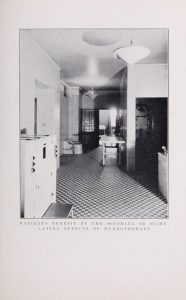Since becoming an MHL contributor in 2013, the Medical Center Archives of NewYork-Presbyterian/Weill Cornell has been steadily adding materials, funded by a series of “micro-grants” from the Metropolitan New York Library Council (METRO) Digitization Grant Program.
I reported on materials digitized in our first micro-grant in my post here. In subsequent projects, we’ve focused on more specific topical materials. Among materials digitized in our second project were reports from several maternity and children’s hospitals:
• New York Asylum for Lying-In Women (merged with New York Infant Asylum in 1899)
• New York Infant Asylum (merged with Nursery and Child’s Hospital in 1909 to form New York Nursery and Child’s Hospital)
• Nursery and Child’s Hospital (merged with New York Infant Asylum in 1909 to form New York Nursery and Child’s Hospital)
• New York Nursery and Child’s Hospital (merged with New York Hospital in 1934)
• Manhattan Maternity & Dispensary (merged with New York Hospital in 1932 and became the NYH Department of Pediatrics)
• Lying-in Hospital of the City of New York
You can see that there are some complex administrative relationships between the various hospitals. All eventually became part of the New York Hospital, now NewYork-Presbyterian/Weill Cornell Medical Center.

From Annual Report – The Society of the Lying-in Hospital of the City of New York 1900
Reports from these hospitals form a chronicle of women’s health care, practices surrounding childbirth, and child care through the nineteenth and early twentieth centuries, documenting changes over time – but they are so much more than that.
I find them especially fascinating, as they paint a vivid picture of life in New York City in the nineteenth and early twentieth centuries. They are a resource for demographic studies, presenting aggregate data on demographics such as the national origins of patients and the occupations of patients’ husbands. On this list of occupations from 1900, you’ll see occupations that no longer exist, such as “egg handler”. You can see the full list here and turn the pages for data on wages, number of living children, and more.

From New York Infant Asylum Annual Report 1872
The reports are a valuable resource for studying social history and treatment of immigrants and the poor. This statement from 1872 on the mission of the New York Infant Asylum also says much about attitudes toward women, sex, and the poor.
You can read the full statement here.
Some of the hospitals include reports of “cases visited” (such as this one from the Lying-In Hospital, 1914) that tell evocative stories of tenement life.

From Annual Report – The Society of the Lying-in Hospital of the City of New York 1914
Read more here!
We just began work on our third METRO micro-grant, and recently added the annual reports of the New York Hospital Westchester Division (formerly Bloomingdale Asylum for the Insane, then Bloomingdale Hospital). The reports, such as this one from 1943, present a picture of treatment of the mentally ill at that time.
Over the next six months, we’ll be adding annual reports from various departments, as well as several hospital publications. So please check back at our page!









